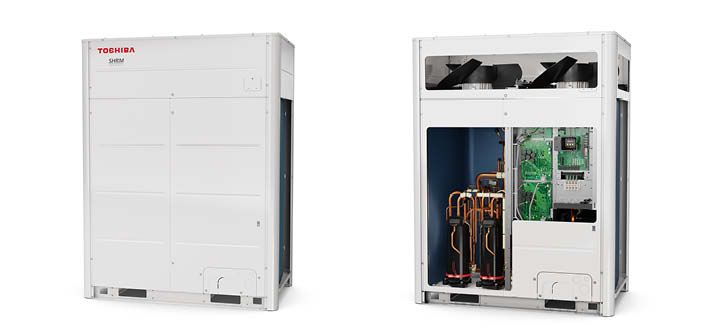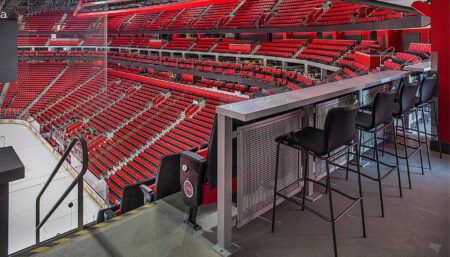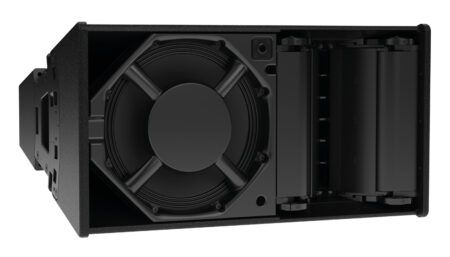The latest generation of Toshiba’s Variable Refrigerant Flow (VRF) air conditioning system, SHRM Advance, runs on lower Global Warming Potential (GWP) R-32 refrigerant.
Toshiba said that this lower GWP, in combination with reduced refrigerant charge, enables SHRM Advance to deliver a reduction of up to 80% in equivalent carbon emissions. This is compared with similarly sized R-410A systems; the precise percentage will depend on the system design for each installation. The SHRM Advance cooling and heating solution is also designed to reduce stadium running costs and deliver comfort for customers and staff.
Toshiba Carrier UK (TCUK) is a joint venture between Toshiba Carrier Corporation and Carrier, which is part of Carrier Global Corporation.
“With the race to achieve net-zero, stadium operators are under increasing pressure to minimise their carbon footprint,” said David McSherry, head of Toshiba DX, residential and light commercial, TCUK. “In addition to the significant sustainability benefits, as the price of R-410A – the refrigerant used in VRF systems to date – rises and availability falls, R-32 offers a very attractive optimum alternative, with significantly lower GWP, reduced costs and improved energy efficiency. SHRM Advance represents a win-win for stadium and hospitality operators and the environment.”
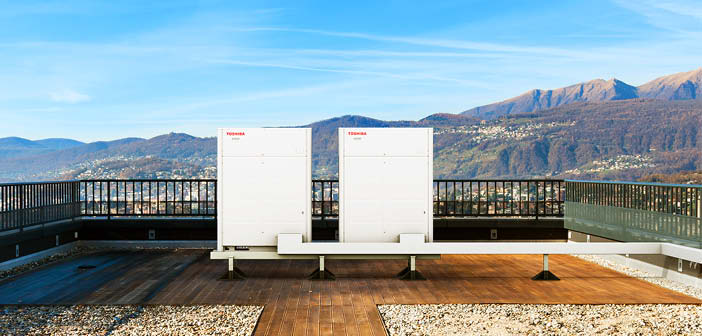
The new VRF system’s features include the ability to select either three-pipe heat recovery or two-pipe heat pump operation, a new twin-rotary compressor with liquid injection, split heat exchanger, sub-cooling plate heat exchanger, a new fan motor, and a special thermodynamic circuit, all contributing to efficiency of SEER up to 8.9 and SCOP up to 4.67.
The company says that for system designers, a new generation of flow selectors with up to 12 ports gives enhanced flexibility and optimises the ability of SHRM Advance to deliver simultaneous cooling and heating. This is controlled automatically, enabling “seamless” energy transfers between areas of the building requiring heating and cooling.
A heat recovery function provides heat to the indoor unit with minimal input from the condensing unit, further improving energy efficiency. If required, SHRM Advance can also be customised to operate as a two-pipe heat pump system.
For installers, the fully packaged SHRM Advance is available in 8 to 24HP capacity units. The new compact chassis height is 1.69m, and it is possible to connect up to 69 indoor units per system. A range of 13 types of indoor unit are available, from 0.3 to 10HP capacity.
As well as conventional indoor units, SHRM Advance is available with a fresh air ventilation duct and a medium temperature water module. Supported by a 70-200% diversity ratio, full system customisation is possible to overcome site-specific project constraints.
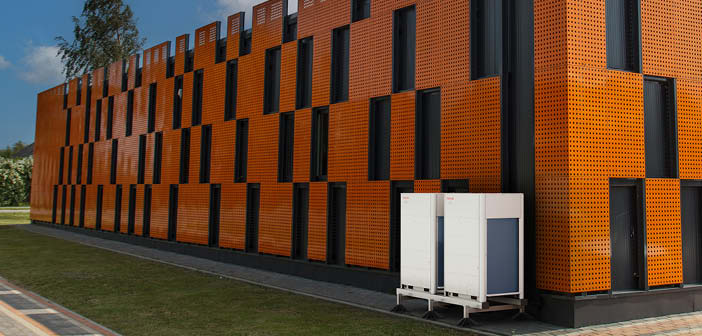
For applications requiring enhanced levels of indoor air quality, Toshiba’s one-way and four-way cassettes offer plasma/ioniser air purification, while the high-wall unit has an ultra-pure filter.
Safe operation is a key design priority; the solution has an advanced integrated leak detection and shut-off valve system. To ensure regulatory compliance at the design stage, equipment selection software takes account of mandatory requirements, based on floor area and refrigerant quantity. For each proposed project design, it gives installers and consultants full guidance to ensure regulatory compliance.
Control is enhanced by Toshiba’s TU2C-Link communication system, designed to provide improved speed and connectivity. A full line-up of wired and central remote controllers is available, offering full compatibility with the new R-32 safety devices. Monitoring solutions include the Wave Tool Advance (available from App store and Google Play) and Link Adaptor.
“The world is heading toward a decarbonised future,” added McSherry. “SHRM Advance enables stadium owners and hospitality operators to contribute to the decarbonisation effort, while saving money and ensuring excellent comfort conditions throughout the year. For both new-build and refurbishment projects, the system is a major step toward net-zero, and it is available now.”


